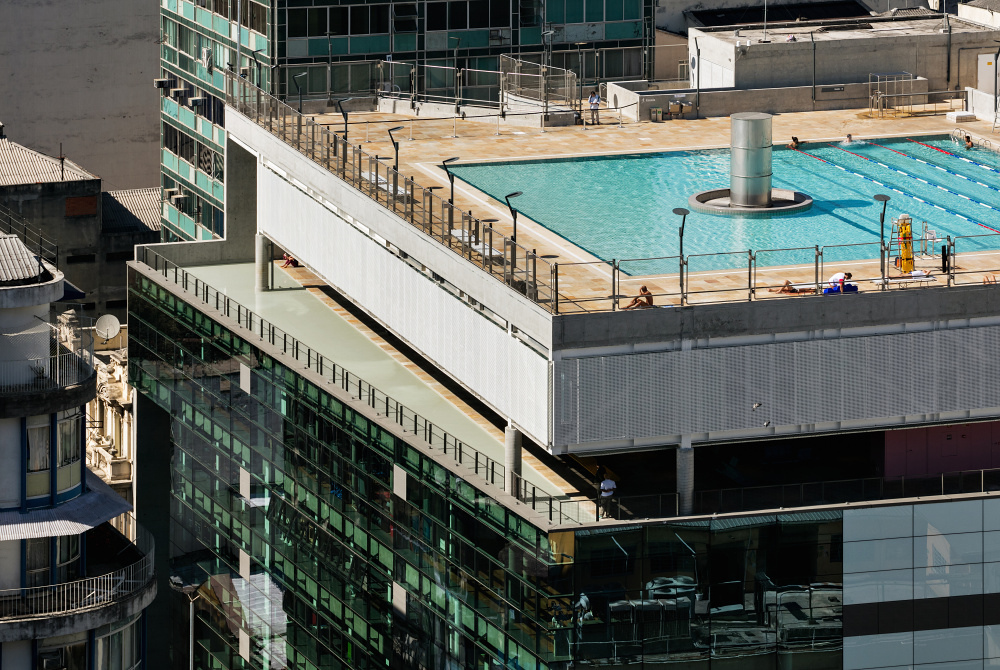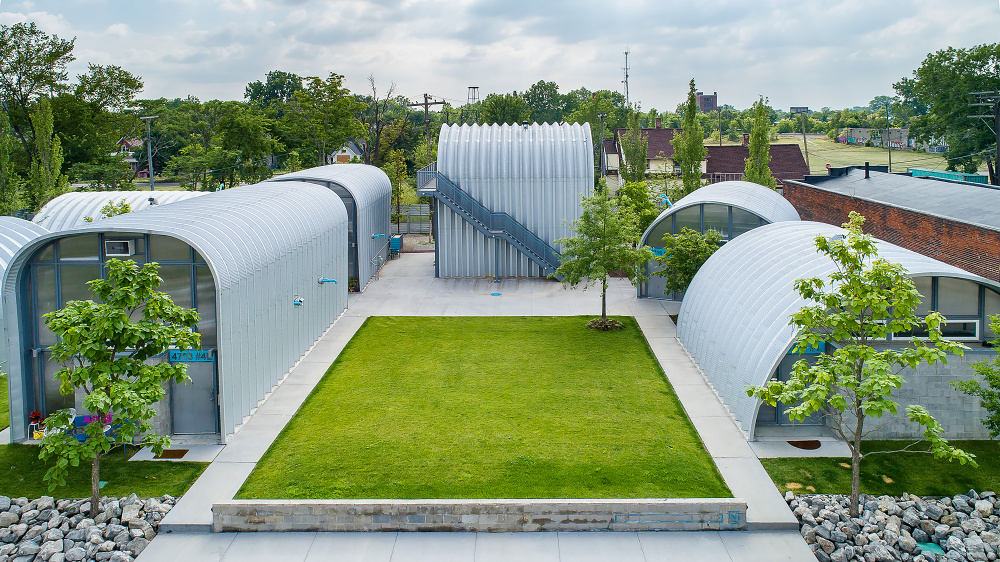MCHAP 2018 FINALISTS ANNOUNCED
MIES CROWN HALL AMERICAS PRIZE
ANNOUNCES 2018 FINALISTS
At an event on July 29, 2018 in Detroit Mies Crown Hall Americas Prize (MCHAP) Director Dirk Denison and 2018 MCHAP Jury Chair Ricky Burdett announced the six finalists for the 2018 Americas Prize.
IMS Paulista, Andrade Morettin Arquitetos Associados, São Paulo, Brazil
This multi-level, stacked cultural building with galleries, library, and cinema on São Paulo’s iconic Paulista Avenue brings the public and pedestrian experience into the structure.

Edificio E, University of Piura, Barclay & Crousse Architecture, Piura, Peru
Set within a dry savannah landscape in the north of Peru, this new university building creates a compact and complex network of interconnected classrooms, offices, and open spaces specifically designed to accommodate students from disadvantaged backgrounds.

SESC 24 de Maio, Paulo Mendes da Rocha and MMBB Arquitetos, São Paulo, Brazil
Shoehorned into a tight site at the heart of São Paulo’s dense but fragile historic center, this institution offers leisure, sports, and medical facilities—including a rooftop swimming pool—to members of its progressive trade association, all connected by a generous 11-story ramp open to all.

Smithsonian National Museum of African American History and Culture ,Freelon Adjaye Bond / Smith Group, Washington, DC, USA
Responding with dignity to the Washington Monument and neighboring historic structures, the slanted copper screens of this new museum embrace a deep, multi-level experience for visitors to this site of pilgrimage for African American culture.

Teopanzolco Cultural Center, PRODUCTORA and Isaac Broid, Cuernavaca, Mexico
Adjacent to a Pre-Hispanic pyramid, the sloping roofs of this new sand-colored cultural center enclose an 800-seat auditorium and performance spaces, offering views of the historic site and city beyond.

True North, Edwin Chan / EC3, Detroit, USA
An innovative use of industrial Quonset corrugated galvanized steel structures creates a sequence of dynamic external and internal spaces providing affordable accommodation to a new generation of urban pioneers in Detroit’s fragile inner-city communities.

The 2018 Americas Prize recognizes the best built work in the Americas completed between January 2016 and December 2017. The MCHAP 2018 Jury includes Chair Ricky Burdett CBE; Jose Castillo; Ron Henderson; Rodrigo Pérez de Arce; and Claire Weisz.
Beginning in January 2018, a network of expert nominators from throughout North and South America anonymously submitted more than 175 projects for the jury’s consideration. MCHAP announced a jury selection of 31 outstanding projects at an event in Venice, Italy, in May.
The selection and announcement of the six finalists concludes the jury’s tour of the project sites. The visits included interviews with the architects, their teams, and the project clients.
MCHAP Director Dirk Denison also situated the selection of finalist projects in terms of their potential for lasting influence for both architecture and culture. “MCHAP projects push forward the development of architecture as a practice, reshaping how we see and organize the built environment around us. They participate in the larger cultural exchange that is an essential characteristic of the Americas today,” Denison said.
Though the jury appreciated the differences in scales, strategies, and contexts of the finalist projects, they also identified common and sometimes unexpected themes that point to the vibrant, sensitive character of current architecture in the Americas. “We have come away with a sense of optimism. Architecture in the early twenty-first century in the Americas is alive and well. There are clear signals that the design profession is responding to the profound social and environmental challenges of our age with confidence, imagination, and modesty,” Burdett said.
The authors of the winning project, to be announced at a symposium on October 10, 2018, at IIT, will be recognized with the MCHAP Award, the MCHAP Chair in IIT’s College of Architecture, and $50,000 to fund research and a publication.